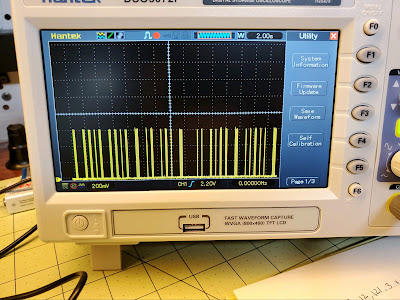...with apologies to Bob Dylan, to finish up the cannon I had been working on, I drew some 14-spoke wheels. I had some artwork for wagon wheels from Gerry Dykstra, but that was not in a format I could edit. So I decided to draw my own. To get the model as precise as I could, I went up to Fort Ward to measure the cannons they have in the restored bastion. One of their guns is a very authentic replica of a 6 pound James Rifle.
I was able to get detailed measurements of the wheels. The hubs in particular were quite interesting with a cove on the inside and an ogive on the outside. Also, I measured the amount of dish in the wheel. It was only 2 inches, but that is an important feature of wagon wheels from this era.
I also measured the 24 pound howitzer they have on site. It is slightly bigger that the 6-pounder but only by about 4 percent.
While I was at Fort Ward I stopped by the Museum and visited the replica of the officer's quarters. I took a panorama of the inside of the officer's quarters. I need to recreate something similar on my layout. I plan to detail the upper story of the Provost Marshall office. So this photo will help guide me. I also had a nice chat with the museum director as she and her colleague were wondering why I was measuring their guns.
Amby continues to make amazing progress on the telegraph system, He now has all five base stations done.
I think he has been having fun with them as he sent me this image of the dot code on his oscilloscope. I was playing around with speeding up the code. I think it might be a tad easier to listen to at about 25% faster than what we have now. It remains to be seen if we will be able to change that in the software.
It is time to begin wiring the dispatcher's control station. That will be built into the cubby hole section of the dispatcher's desk.
When I built that cubby hole I was inspired by the field desks that civil war officer's used. It happens that the museum at Fort Ward has one of those on display too.
Each individual station will be adorned with simulated brass plates that I printed on my 3D printer. I now need to finish painting them.








Bernie,
ReplyDeleteWhat type of finish are you using for the brass plates? It is very realistic and convincing.
Jeff
Sprayed the whole plate with flat black. Then use craft acrylic golden metallic paint and lightly painted the tops of the rim and letters. I'm going for a builder's plate look. The gold against the black makes the text easier to read.
DeleteThe plates are beautifully rendered! I was surprised by the depth of the brass paint. With you military modeling skills, I thought it might be one of the metalizer finishes.
DeleteJeff
I tried a couple metallic and buff-able paints from AK. But, the craft acrylic was the easiest and best finish.
DeleteThis is good to know if I ever have to do any metallic finishes, thank you.
DeleteJeff
The chair in the corner of the officers quarter is interesting. Do you know anything about the design?
ReplyDeleteIt looks like a typical folding chair from that era. Somewhere I have full sized plans for a similar chair that I bought on-line. I think they are still available if you wish to make one. You need a band saw to cut the curved pieces, or a good jig saw. The clothe piece has to be sewn. But it's a simple stitch that anyone with a sewing machine could handle.
DeleteLook for "Civil War Officer's Chair" by A.J Hamler. It was originally published in Woodworker's Journal The cost was $7.95 for the pdf.
Delete